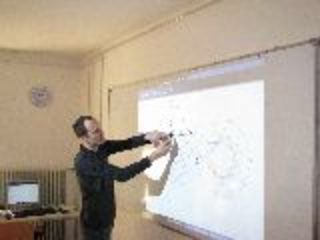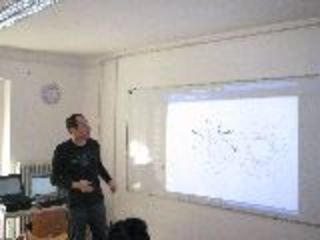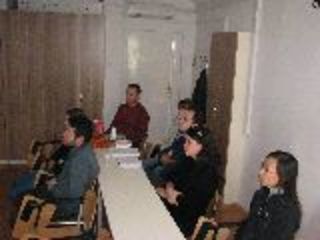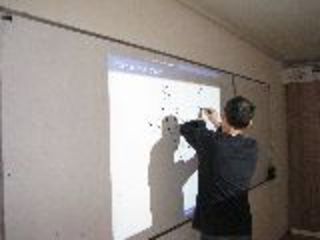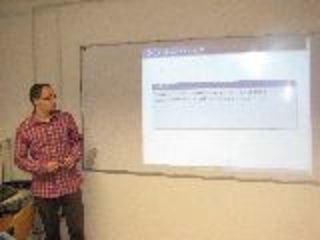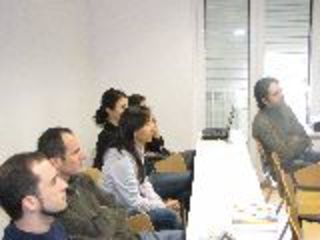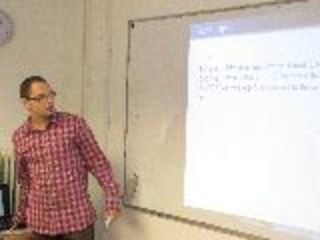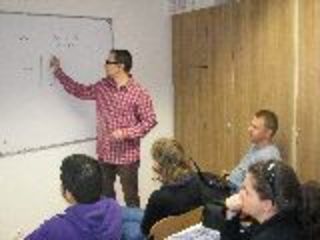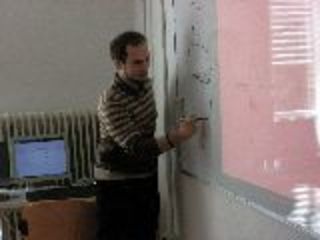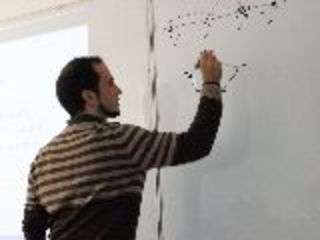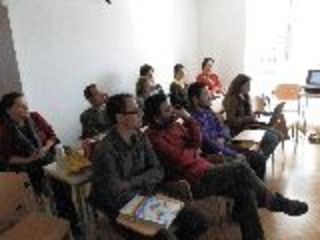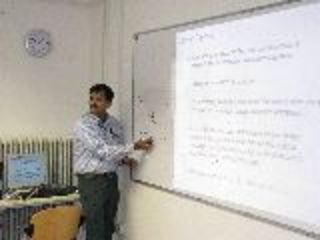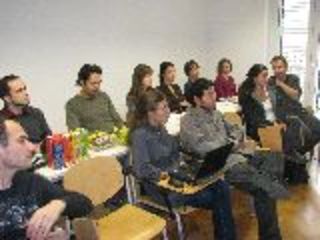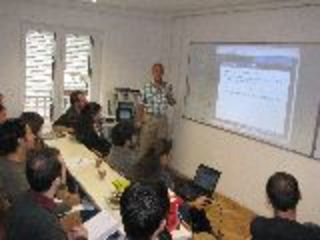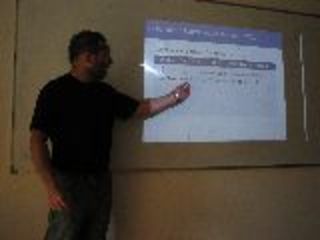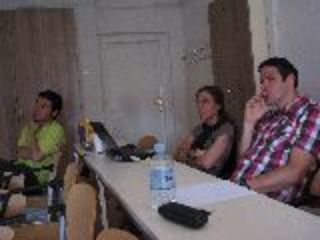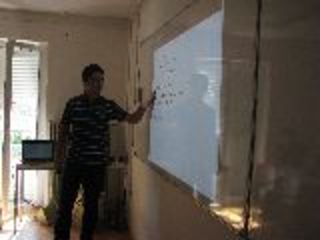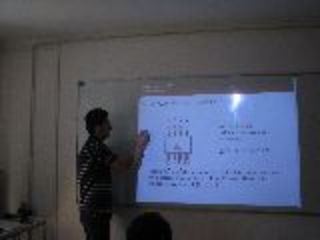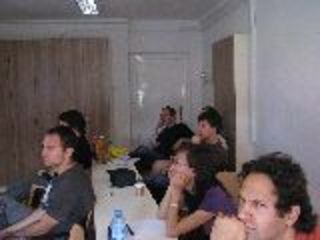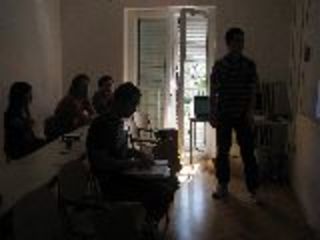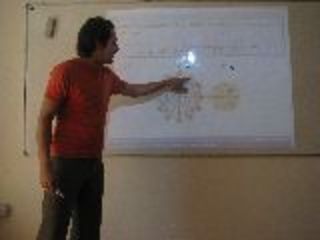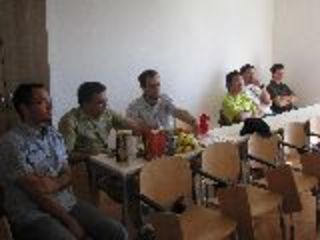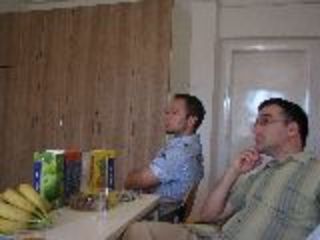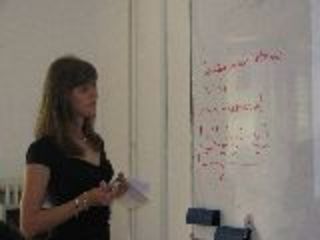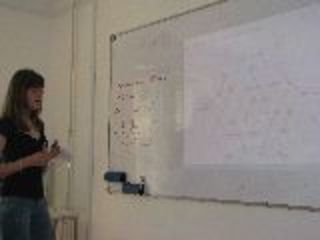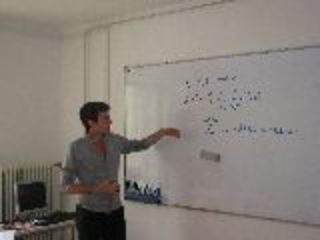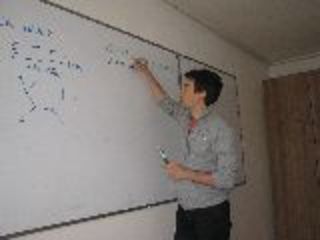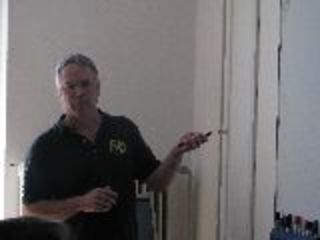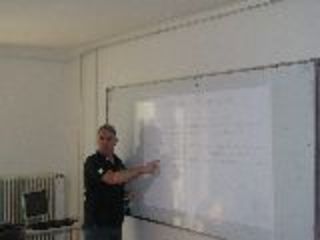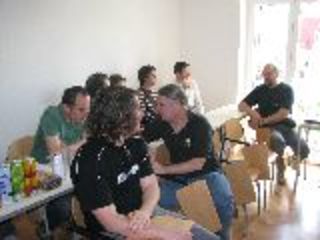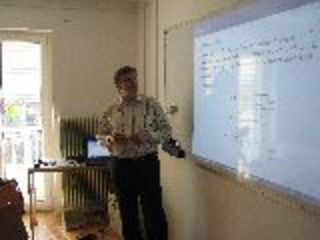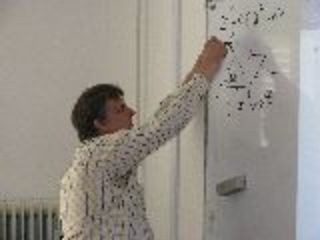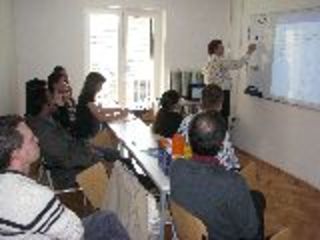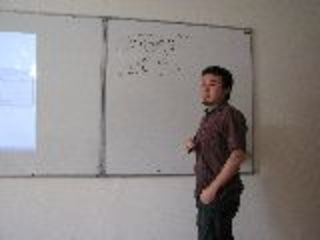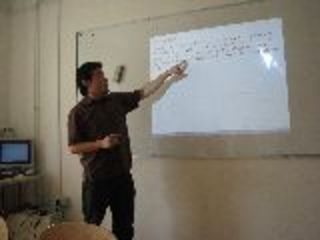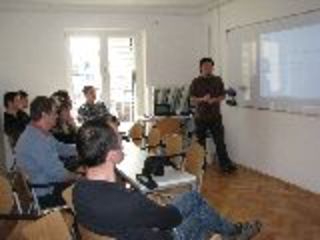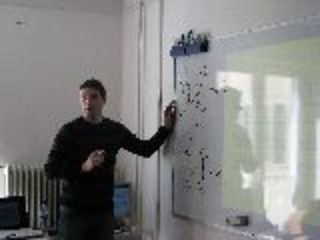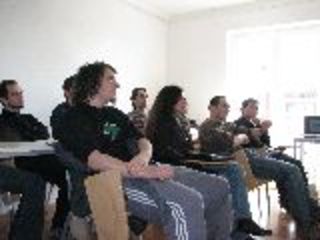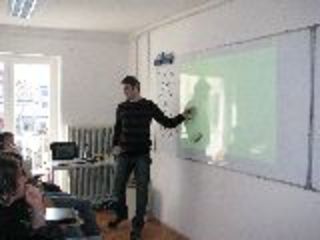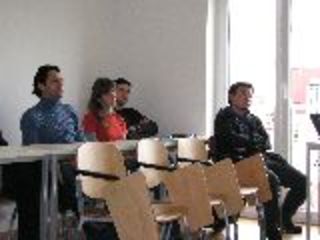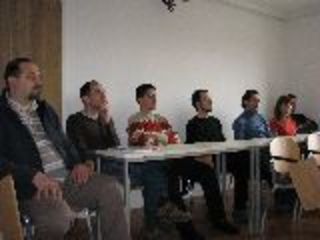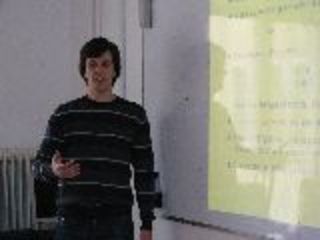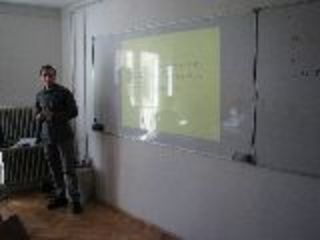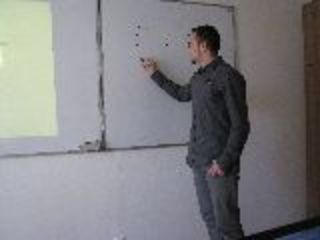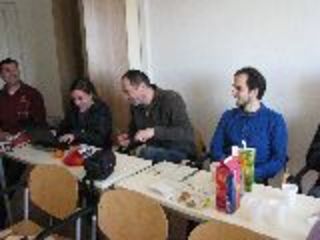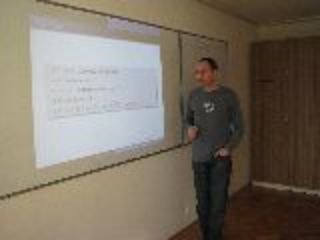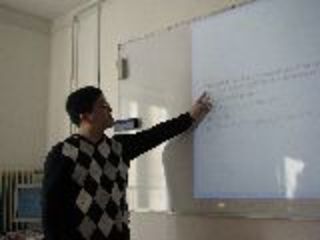
Raziskovalni matematični seminar - Arhiv
| 2025 | 2024 | 2023 | 2022 | 2021 | 2020 | 2019 | 2018 | 2017 | 2016 | 2015 | 2014 | 2013 | 2012 | 2011 | 2010 |
| 1 | 2 | 3 | 4 | 5 | 6 | 7 | 8 | 9 | 10 | 11 | 12 |
19.12.2011 Lecturer: dr. Primož Potočnik (University of Ljubljana, Slovenia)
Title: Group amalgams and locally arc-transitive graphs.
Abstract: A group amalgam is a quintuple (L,f,B,g,R) where L,B and R are abstract groups and f:B->L and g:B->R are group monomorphisms. Given a connected locally G-arc-transitive graph X (ie. a connected graph X together with a group of automorphisms G of X such that the vertex-stabiliser G_v is transitive on the neighbourhood of v in X for every vertex v of X), one can consider the amalgam (G_v,f,G_uv,g,G_u) where f and g are the inclusion mappings. Conversely, given an amalgam (satisfying certain additional requirements), one can construct all connected locally arc-transitive graphs up to a given number of vertices that realises the amalgam. This interplay of amalgams and graphs will be described in the talk in some (but not too many) details.
28.11.2011 Lecturer: dr. Štefko Miklavič
Title: Automorphism groups of the "Rose-window" graphs which are not edge-transitive.
Download the slides from the talk here: DOWNLOAD!
21.11.2011 Lecturer: Ademir Hujdurović
Title: Quasi m-Cayley graphs
14.11.2011 Lecturer: dr. Martin Milanič
Title: Hereditary efficiently dominatable graphs
Abstract: An efficient dominating set (or perfect code) in a graph is a set of vertices the closed neighborhoods of which partition the graph's vertex set. It is NP-complete to determine whether a given graph contains an efficient dominating set. We study the class of hereditary
efficiently dominatable graphs, that is, graphs every induced subgraph of which contains an efficient dominating set. Based on a decomposition theorem for (bull, fork, C_4)-free graphs, we derive the forbidden induced subgraph characterization of hereditary efficiently dominatable graphs. We also present a polynomial time algorithm for finding an efficient dominating set (if one exists) in a class of graphs properly containing the class of hereditary efficiently dominatable graphs, by reducing the problem to the maximum weight independent set problem in claw-free graphs.
DOWNLOAD THE SLIDES FROM THE TALK: DOWNLOAD!
07.11.2011 Lecturer: Dr. Sugata Gangopadhyay (Department of Mathematics at Indian Institute of Technology, INDIA).
Title: Boolean functions in Cryptology.
Download the slides from the talk: DOWNLOAD!
10.10.2011 Lecturer: dr. Sergei Evdokimov (Petersburg Department of V.A.Steklov Institute of Mathematics, St. Petersburg, Russia)
Title: Characterization of Cyclic Schur Groups
Abstract: We say that a finite group G is a Schur group if every S-ring over it is schurian, i.e. determined by a suitable permutation group on G containing the regular subgroup of right translations. Here under an S-ring over G we mean a subalgebra of the group algebra QG that contains 1_G and is closed with respect to the componentwise multiplication and inversion. In the talk a complete characterization of cyclic Schur groups is given. It follows that the smallest non-Schur cyclic group has order 72. The proof is based on the theory of circulant S-rings and on the criteria of schurity and non-schurity for them. (joint work with I. Kov´acs and I. Ponomarenko).
Slides from the talk are avalilable here: DOWNLOAD!
Title: On quasi-thin association schemes (joint with M.Muzychuk)
Abstract: An association scheme is called quasi-thin if the valency of each its basic relation is one or two. A quasi-thin scheme is Kleinian if its thin residue is the Klein four-group with respect to relational product.
It turns out that any Kleinian scheme arises from near-pencil on
Title:Linear Cryptanalysis
Abstract: In this talk we present the details of linear cryptanalysis, one of the most significant attack applicable to symmetric-key block cipher. The topic is based on the analysis of a simple, yet realistically structured, basic Substitution-Permutation Network cipher. Understanding the attacks as they apply to this structure is useful, as the Rijndael cipher, recently selected for the Advanced Encryption Standard (AES), has been derived from the basic SPN architecture.
Slides from the talk are available here: DOWNLOAD!
Abstract: Given a subset
 3
3manifolds with a finitely generated fundamental group. We apply it to count
branched and unbranched coverings over compact surfaces (bordered or with
empty border).
As a consequence, we suggest a new approach to count maps on surfaces up to
orientation preserving homeomorphism. The further development of the method
gives us a possibility to count chiral maps (or twins) by number of edges on a
closed orientable surface.
Abstract: Given a cyclic group and a subset of this group, we define a cyclic Haar graphs as a bipartite graph with two copies of the cyclic group and a edge {i,i+j} with i in one partition and i+j in the other.
Given a fix cyclic Haar graph H(n,A). We say that A is an HI-set if for any subset B of the cyclic group such that the cyclic Haar graphs H(n,A) and H(n,B) are isomorphic then there is an element f in the affine group of the cyclic group which maps B into A. The graph isomorphism problem in the class of cyclic Haar graphs is, esentially, to describe the pairs A and B for which the graphs H(n,A) and H(n,B) are isomorphic but there is not such function which maps B into A.
In this talk we will discuss some tools to find which graphs are isomorphic and there is an element f in the affine group of the cyclic group which maps B into A.
Orlin's conjecture holds within the class of chordal graphs; if true in general, it would provide a combinatorial characterization of equistable graphs. In this talk, we will explain the known connections between general partition graphs, equistable graphs, and triangle graphs, and show some partial results on Orlin's conjecture. In particular, we will present a complete characterization of equistable graphs decomposable with respect to the Cartesian or the tensor product.
SLIDES FROM THE LECTURE ARE AVAILABLE HERE: DOWNLOAD!
31.01.2011. ob 10:00 Seminarska soba v Galebu
Title: On an inverse problem to Frobenius's theorem
Abstract: Let G be a finite group and e a positive integer dividing |G|, the order of G.
SLIDES FROM THE TALK ARE AVAILABLE HERE: DOWNLOAD!
Povzetek: Though definition of permanent looks deceptively similar to determinant, the former is much harder to calculate than the later. A possible remedy is to convert a matrix such that the permanent of original matrix equals determinant of converted matrix. This conversion is given by a map on matrices. We will show that for matrices over finite fields no such bijective conversion is possible.








